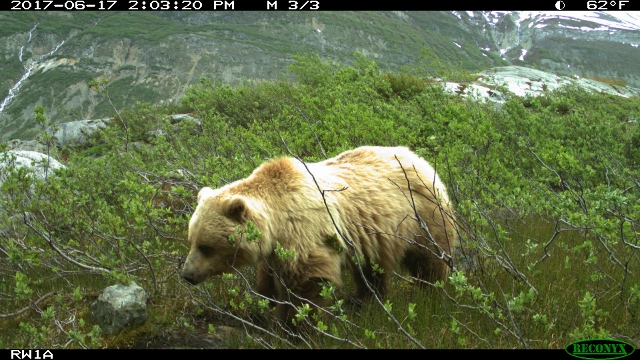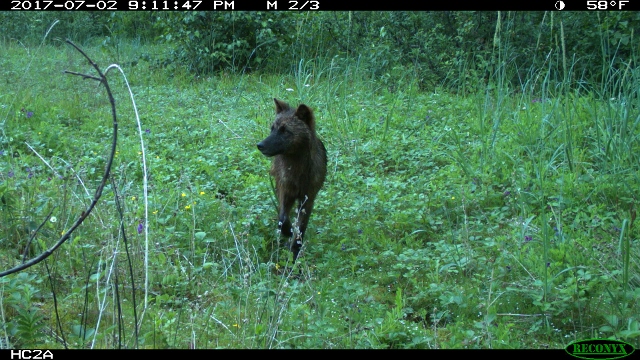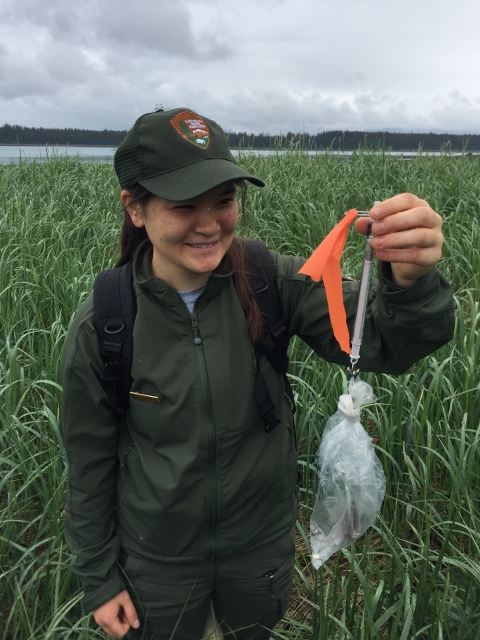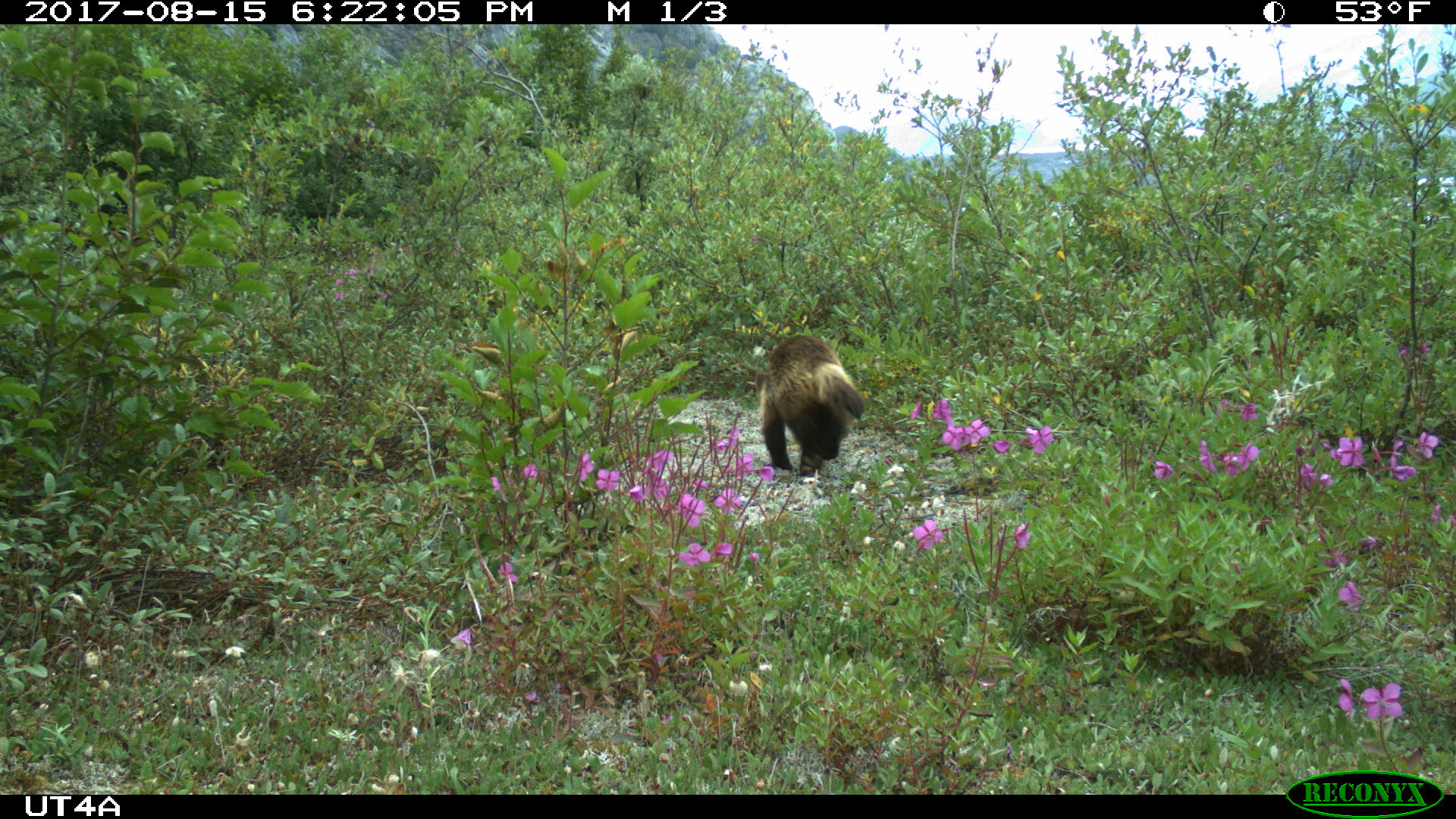 Photo of a brown bear captured with a remote motion sensor camera in Tarr Inlet, Glacier Bay.
Photo of a brown bear captured with a remote motion sensor camera in Tarr Inlet, Glacier Bay.In addition to remote camera installation, small mammals were trapped at 5 of the 10 study sites (Bartlett Cove, Reid West, Lamplugh, South Sandy Cove and Hunter Cove). One hundred live-traps were placed in two different habitats at each site for two days and nights. Small mammals were captured in 142 instances, the overwhelming majority of these mammals were shrews (species identification pending) with a small number of red-backed and tundra voles. At one site only (Hunter Cove), Keen’s mice, (Northwestern Deermouse) were also captured in 13 traps.

Rare photo of a wolf captured with a remote motion sensor camera in Hunter Cove, Glacier Bay.
In 2018, the remote cameras will be installed again to continue monitoring wildlife responses to human use of the shoreline areas of the park. Small mammals will be trapped at the remaining 5 study sites (Lester Island, Reid East, Adams Inlet, Upper Tarr Inlet and Beartrack Cove) and bird point counts will be conducted at each of the study sites. Small mammal trapping and bird surveys will be used to augment the camera data and compare species distribution of mammals and birds in recently deglaciated areas vs. older habitats as well as the east arm vs. the west arm of Glacier Bay. Glacier Bay National Park was created to foster the scientific study of ecological succession after glaciers retreat, and this study will add to the scientific knowledge on how animals recolonize landscapes, in addition to helping understand how wildlife may be affected by humans.

Biological Technician Kiana Young weighs a shrew live-trapped in Bartlett Cove, Glacier Bay.
A rare photo of a wolverine running by a motion sensor camera in Tarr Inlet, Glacier Bay.

